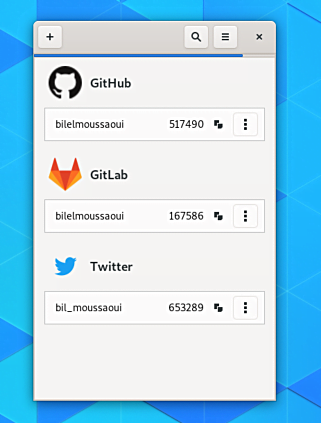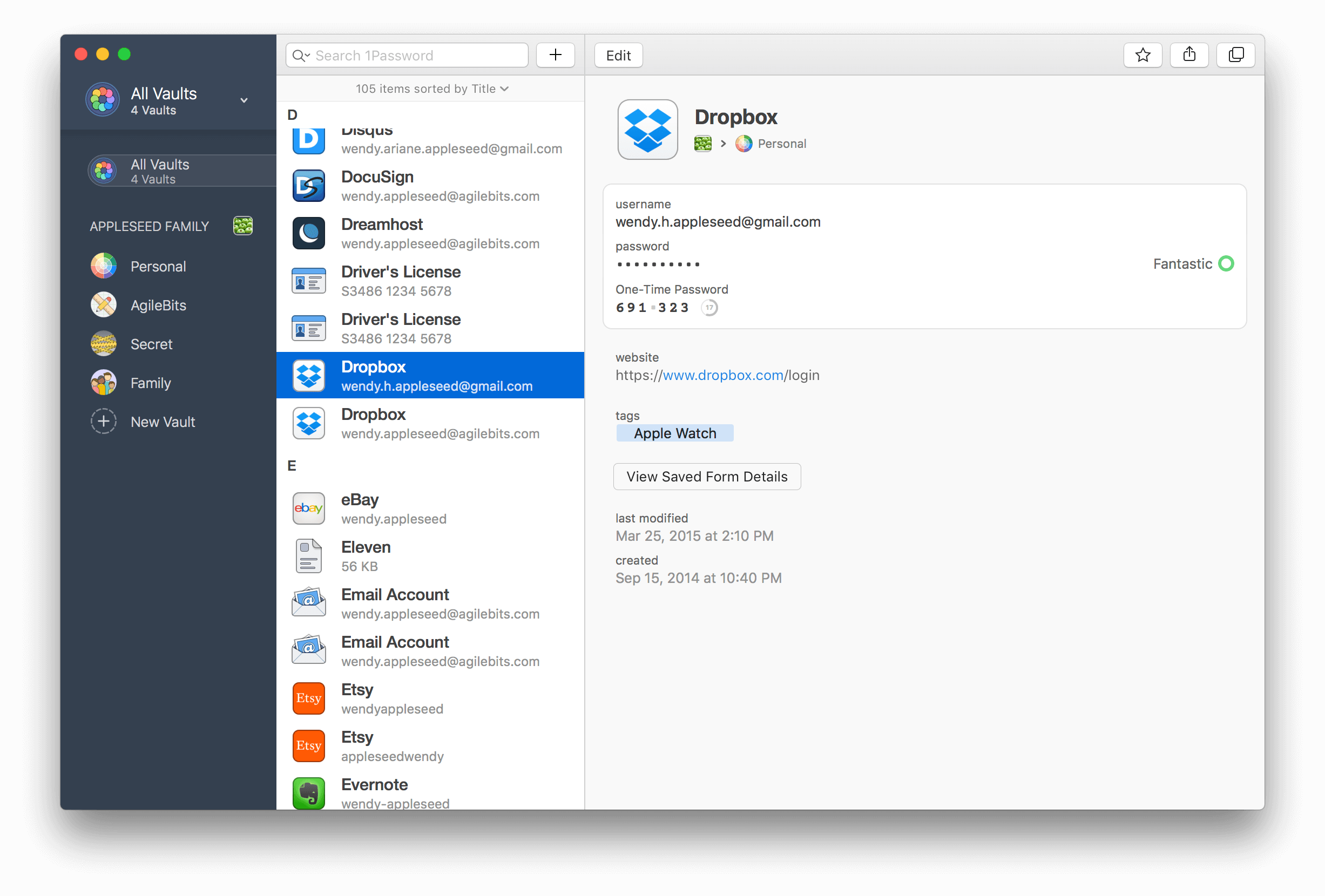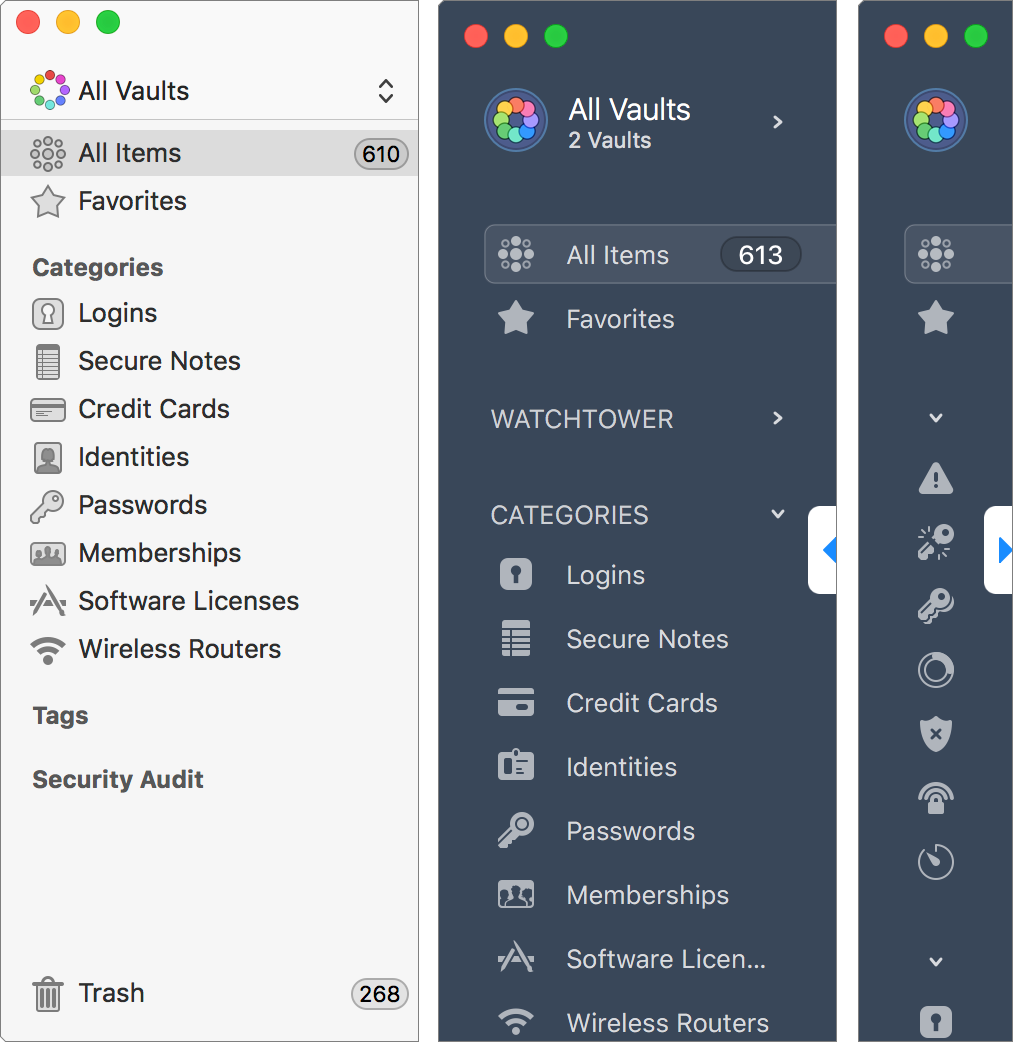1password Github 2fa
Inspired by the original gist.
In your case, losing your phone means losing all 2FA authentication codes you had. If you don't want to store the 2FA on 1Password, store on another application that supports cloud backup. You will increase the security a little, because any attacker will need to compromise 2. SAASPASS is a free password manager & authenticator 2FA code generator with autofill & autologin capabilities. It is built with Security & Usability in mind. The SAASPASS browser extension can autofill both your passwords and authenticator codes. The browser extension is secured with extremely usable passwordless MFA. Configuring 1Password for Two Step Verification. Click Edit and then enter 2FA or something similar as a Label in a new field. Click the Ellipses icon and select One-Time Password. Open a browser window side-by-side with 1Password, log in to your Google account and navigate to Sign-in & Security. Select 2-Step Verification and follow the walk.
This snippet will extract all the OTP (2FA) keys from Authy, and convert them to scannable QR codes and URLs you can copy-paste into e.g. 1password. Unlike other approaches, this consumes the internal digits record, making it compatible with authy-specific extra long 2FA codes.
- 1Password’s biggest drawback is the lack of a free version, as the service costs $3 a month when billed annually, though you can try both the regular and family versions free for 30 days.
- On GitHub, on the 2FA page, type the code and click Enable After you’ve saved your recovery codes and enabled 2FA, we recommend you sign out and back into your account. In case of problems, such as a forgotten password or typo in your email address, you can use recovery codes to access your account and correct the problem.
Usage

- Install the Authy Chrome Extension and the Authy App.
- Open the authy app from the browser icon in the top right, and view some TOTP codes. This decrypts them so we can extract them.
- Visit the Chrome Inspector Page (chrome://inspect/#apps) and click 'inspect' under 'Authy'. If that's not there, you likely need to open the Authy app from chrome://apps/.
- In the window that pops up, click 'console' in the top menu, and paste in the below snippet:
NB: it's unwise to post screenshots of these codes representing your 2FA secrets :p
Latest versionReleased:
A Python client and wrapper around the 1Password CLI.
Project description
Python wrapper around 1Password password manager for usage within python scripts andJupyter Notebooks. Developed by Data Scientists from Wandera to be used within bothresearch and python services use cases.
Installation
If you have issues with PyYaml or other distutils installed packages then use:
Both of these will install the op cli and python client.This is currently fixed at op version 1.8.0 to ensure compatibility. If you wish to use a higher version of op youcan by running op update in a terminal however note that we cannot ensure it will work with our client yet.
Mac OS users will be prompted with a seperate installation windows to ensure you have a signed version of op - makesure to check other desktops that the installer might pop up on.
Basic Usage
Currently tested on Mac OS and Linux.
On first usage users will be asked for both the enrolled email, secret key and masterpassword. There is also verification of your account domain and name.
For all following usages you will only be asked for a master password.
You will be given 3 attempts and then pointed to reset password documentation or alternatively you canrestart your kernel.
No passwords are stored in memory without encryption.
If you have 2FA turned on for your 1Password account the client will ask for your six digit authenticator code.
Input formats
To be sure what you are using is of the right format
- Enrolled email: standard email format e.g. user@example.com
- Secret key: provided by 1Password e.g. ##-######-######-#####-#####-#####-#####
- Account domain: domain that you would login to 1Password via browser e.g. example.1password.com
- Account name: subdomain or account name that cli can use for multiple account holders e.g. example
Contributing
The travis build will run with any PR or commit to master branch and then updatesthe master branch with a new minor version for contributors to branch from.
This means when contributing you should create a feature branch off of the master branch and withoutmanually bumping the version can focus on development. Merge back into master.
Later admins will bump major versions.
CLI coverage
Full op documentation can be found here: https://support.1password.com/command-line-reference/
The below is correct as of version 0.3.0.

Commands
This is the set of commands the current python SDK covers:
- create: Create an object
- document
- delete: Remove an object
- item: we use this method to remove documents but now there is a new delete document method
- get: Get details about an object
- document
- item
- list: List objects and events
- items
- vaults
- signin: Sign in to a 1Password account
- signout: Sign out of a 1Password account
This is what still needs developing due to new functionality being released:
- add: Grant access to groups or vaults
- group
- user
- completion: Generate shell completion information
- confirm: Confirm a user
- create: Create an object
- group
- user
- item
- vault
- delete: Remove an object
- document
- user
- vault
- group
- trash
- edit: Edit an object
- document
- group
- item
- user
- vault
- encode: Encode the JSON needed to create an item
- forget: Remove a 1Password account from this device
- get: Get details about an object
- account
- group
- template
- totp
- user
- vault
- list: List objects and events
- documents
- events
- groups
- templates
- users
- reactivate: Reactivate a suspended user
- remove: Revoke access to groups or vaults
- suspend: Suspend a user
- update: Check for and download updates
Roadmap
- Add Windows functionality
- Add clean uninstall of client and op
- Remove subprocess usage everywhere -> use pexpect
- Add test docker image
- Get full UT coverage
- Align response types into JSON / lists instead of JSON strings
- Ensure full and matching functionality of CLI in python
- add
- confirm
- create
- delete
- edit
- encode
- forget
- get
- list
- reactivate
- remove
- suspend
- Use the new CLI update method
Release historyRelease notifications | RSS feed

0.5.1
0.5.0
0.4.5
0.4.4
0.4.3
0.4.2
0.4.1
0.4.0
0.3.0
0.2.5
0.2.4
0.2.3
0.2.2

0.2.1
0.2.0
0.1.9
0.1.8
0.1.7
0.1.6
0.1.5
0.1.4
0.1.3
1password Github 2fa Login
0.1.2

0.1.1
0.1.0
Download files
2fa Password
Download the file for your platform. If you're not sure which to choose, learn more about installing packages.
| Filename, size | File type | Python version | Upload date | Hashes |
|---|---|---|---|---|
| Filename, size 1password-0.5.1.tar.gz (11.7 kB) | File type Source | Python version None | Upload date | Hashes |
Hashes for 1password-0.5.1.tar.gz
Github 2fa Command Line
| Algorithm | Hash digest |
|---|---|
| SHA256 | e2cc9747b9f703c75ff45d2612d8bc8e9d4e46f0ab03b9a2605271833987a350 |
| MD5 | f9664b861a888241b9203c2fba7aa01e |
| BLAKE2-256 | b926f1040bf5a1665fd8af86f83cecbe2657893c69843f578735ba6d218a24d4 |
